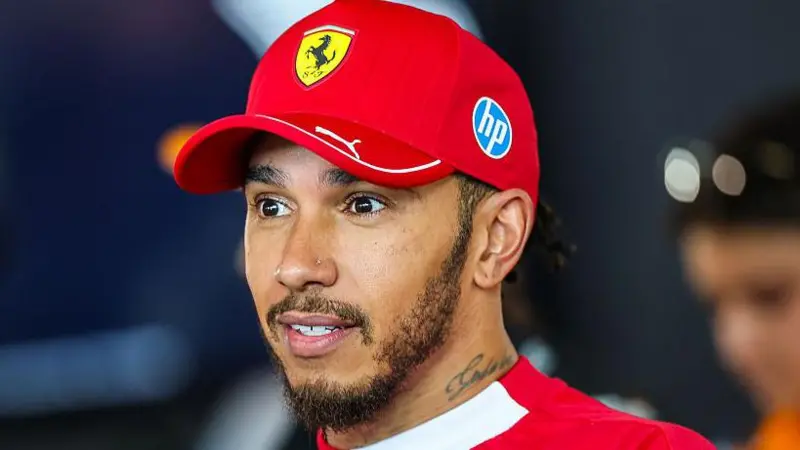
What Is Going Wrong for Hamilton and Ferrari? A Tough First Half of the Season
Understanding what is going wrong for Hamilton and Ferrari in this challenging 2025 campaign
Lewis Hamilton’s first six months at Ferrari have been a mixed bag — with promising moments overshadowed by frustration and unmet expectations. The seven-time world champion is quick to say that off the track, everything is going well. Yet when it comes to his race results and performance, it’s a very different story. The fact is, what is going wrong for Hamilton and Ferrari has become a hot topic as the 2025 Formula 1 season hits its midpoint.
Hamilton arrived at Ferrari amid huge fanfare and excitement. When his move was announced in early 2024, it sent shockwaves through the sport. Many believed he was joining a team ready to challenge for the title and push him toward an eighth world championship. But now, 18 months later, reality has failed to match the hype.
Currently sitting sixth in the drivers’ standings, Hamilton trails his Ferrari teammate Charles Leclerc by 28 points, with the Monegasque outqualifying him 9 times to 4 so far this year — usually by around 0.15 seconds per lap. Hamilton’s best grand prix finish is fourth, matching his best qualifying spots in Monaco and Austria. The season has been far from the dominant statement many expected.
The car and the competition: bigger problems for Hamilton and Ferrari

F1 2025: Lewis Hamilton struggles at Ferrari, problems explained, analysed, Charles Leclerc contender, what is going wrong
Ferrari themselves came into 2025 confident they could fight for both titles. After pushing McLaren close in the previous season’s constructors’ championship, expectations were high. Yet as we approach the British Grand Prix, the team’s car is statistically the slowest among the top four teams in qualifying — trailing McLaren by nearly 0.4 seconds a lap on average.
Hamilton has found himself behind Leclerc in pace, and even behind George Russell during Russell’s disappointing final year at Mercedes. It’s been a humbling experience for the seasoned Brit.
So, what is going wrong for Hamilton and Ferrari? The answer is complex. The 40-year-old driver openly admits he is still adjusting to Ferrari’s culture, processes, and especially how the car feels on track. Unlike Mercedes, Ferrari’s engineers run their setup differently, which has caused friction and a steep learning curve.
Hamilton explains, “It looks a lot worse outside than it probably is on the inside. It’s my first half of the year in a new team, so it’s interesting to see how different teams work and operate. The way they set the car up is completely different.”
He’s constantly pushing his engineers to adapt and try new approaches — a process that takes time. “I’m constantly battling the engineers, asking questions. They say, ‘This is how we always do it,’ and I say, ‘What about this?’ So, bit by bit, we’re making progress.”
Signs of progress but also growing pressure
There are positive signs that Hamilton is closing the gap to Leclerc. His qualifying deficit dropped from 0.23 seconds in the first five races to just 0.09 seconds over the last six events. Since Monaco, Hamilton has consistently qualified inside the top five, showing some improvement.
Unfortunately, race day has not been so kind. Misfortune and tactical errors have hampered his ability to translate qualifying into strong results. A costly radio miscommunication in Monaco resulted in a three-place grid penalty. In Spain, a strategic blunder by Ferrari allowed Mercedes’ George Russell to sneak ahead, while both Ferrari cars suffered unexplained mechanical issues late in the race.
Canada brought further bad luck when Hamilton hit a groundhog, damaging his car’s floor and losing crucial lap time. These incidents have compounded frustrations for the driver and team.
Team principal Frederic Vasseur has been defensive under growing pressure. In a rare outburst, he slammed Italian media criticism ahead of the Canadian GP as damaging distractions rather than valid points. Many observers have questioned this stance, noting the real issue lies in the car’s competitiveness — not the coverage.
Ferrari’s outlook and 2026 hopes
Criticism is inevitable given the current results. After qualifying 11th and 12th at Ferrari’s home race in Imola, Leclerc admitted the team was “P-nowhere.” Both drivers have complained about the lack of substantial upgrades — the first since Bahrain arriving only recently in Austria, with more promised.
Vasseur insists the car is better than the results suggest and describes their progress as a “decent recovery,” noting the team is second in the constructors’ standings despite a slow start. He also acknowledges McLaren is “one step ahead” and stresses the importance of working on tyre management — a key differentiator in current Formula 1 races.
Hamilton views 2025 as a building year, with the real target being 2026 when new regulations will introduce redesigned cars and engines. He admits he has never felt fully comfortable with the 2022-spec cars, which demand a driving style very different from previous eras.
“The fact is, with this car, hopefully we can still fight for second in the constructors’ championship,” Hamilton says. “But I want a car that can win next year. That’s the priority. That’s what we’ve come here to get.”
In conclusion, what is going wrong for Hamilton and Ferrari boils down to a challenging adjustment period for the driver, an underperforming car compared to rivals, and a team still finding its rhythm under pressure. Yet, with signs of gradual improvement and a focus on the future, both Hamilton and Ferrari remain optimistic that the hard work will pay off — and that 2026 will bring the title fight both expect.














































There are no comments yet. Be the first to comment!